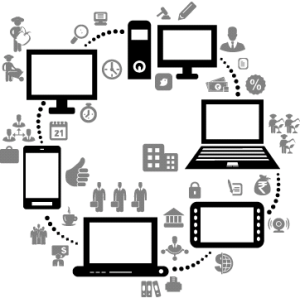 This is the Final Part of the Three Part Article on e-Initiatives in India. Read Part 1 – e-Governance & Digital Offices Part 2 covered – e-Records and Rights for Citizens, Judicial Systems and other e-Citizen projects. Today we’ll cover the electronic tax bases initiatives and electronic / mobile money disbursement.
This is the Final Part of the Three Part Article on e-Initiatives in India. Read Part 1 – e-Governance & Digital Offices Part 2 covered – e-Records and Rights for Citizens, Judicial Systems and other e-Citizen projects. Today we’ll cover the electronic tax bases initiatives and electronic / mobile money disbursement.
The digitization of direct and indirect tax functions has simplified the filing of records, maintaining compliance and getting tax refunds. Electronic filings also make it easier to track noncompliance and tax evasion by mixing and matching various databases. As information and money get digitized, it is becoming easier to tax the two non-digital entities: (1) people (individuals or companies) and (2) goods and services. Earlier (1) the activities of economic actors, (2) their tax returns and (3) their money were paper-based. This made it difficult to match the economic activities with the money trail.
Indians now primarily file their taxes online; out of the 34 mn people that filed their income taxes with the Government in FY2013, 22 mn did so electronically. Across direct and indirect taxes, there are now unique and electronically linked identities for each taxpayer and an elaborate system of matching various transactions by the taxpayer through the year. The following Press Release Shows how Income Tax Department has electronically linked itself with various intermediaries and channels in India.
Indirect taxes: IT infrastructure in place for rollout
As the rollout of Goods and Service Tax is being planned, significant time and investment have gone in getting the IT infrastructure right. The Government formed an empowered group on IT Infrastructure on GST, headed by Nandan Nilekani, which is helping to shape the IT rollout preparation as GST is politically/ economically debated between the Centre and states.
All stakeholders are on the same platform for four basic activities: (1) registration, (2) payments (called challans in India), (3) return filings and (4) inter-state input tax credits. We expect a meaningful reduction in the activities of the unorganized sector as GST rollout progresses. A few years later it would not be surprising if we see similar notices being sent by indirect-tax authorities.
The Common GST Portal will eliminate basic fraud as illustrated in the chart below.
India has a large, unorganized market and many organized industries face challenges from small businesses that avoid taxes. An electronic filing and recording system will mean that many such businesses will show up on the radar of Government and industry associations.
eCash / Subsidy Disbursement in India
The system of distributing Indian subsidies has been under fire for two main reasons: (1) price signals get distorted as prices are artificially tampered with (reduced in the case of say, diesel and cooking fuels or increased in the case of minimum support prices) and (2) the list of beneficiaries is faulty, which causes large-scale leakages.
There are three elements here: (1) people who need to receive the benefits, (2) information about the people: their eligibility and bank accounts and (3) the actual transfer of the money. The Government is starting to roll out transfer of benefits through the UID system. Earlier this year, the Government announced 34 schemes that would be channelized through UID-linked bank accounts. Most of these Schemes are for the Schedule Caste / Tribes & Minorities in India which is a Vote Bank Politics of the Corrupt Congress Government and is termed by the press as Cash for Vote Schemes which will disburse a whopping USD 2 Bn this year.
The holy grail of a UID-linked direct benefit transfer is for the Government to be able to transfer all its “subsidies” through the direct mechanism. However, this will take a significant amount of time: the banking penetration is low, with less than a quarter of the population having bank accounts. Putting everyone on the system will require rethinking the branch-banking model of reaching the final customer. Possibly this will require a more spruced-up version of the business correspondent (BC) model or will require using mobile money as a way to reach the money to the right hands.